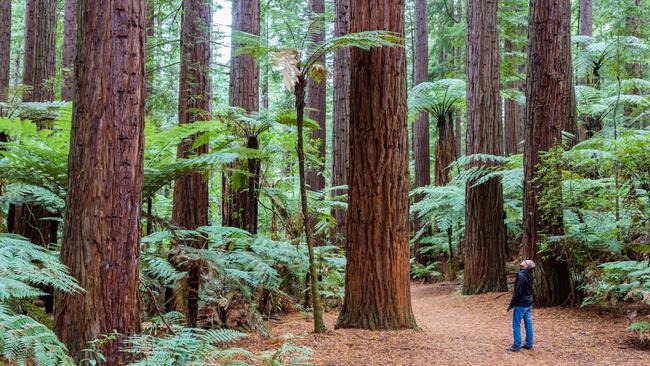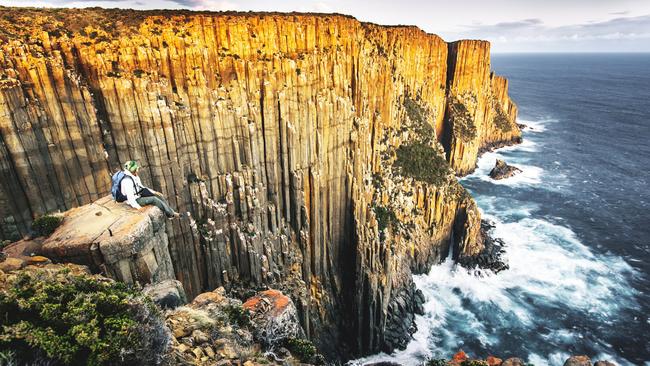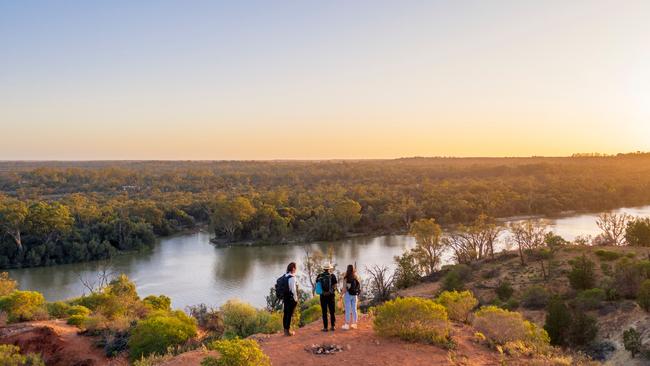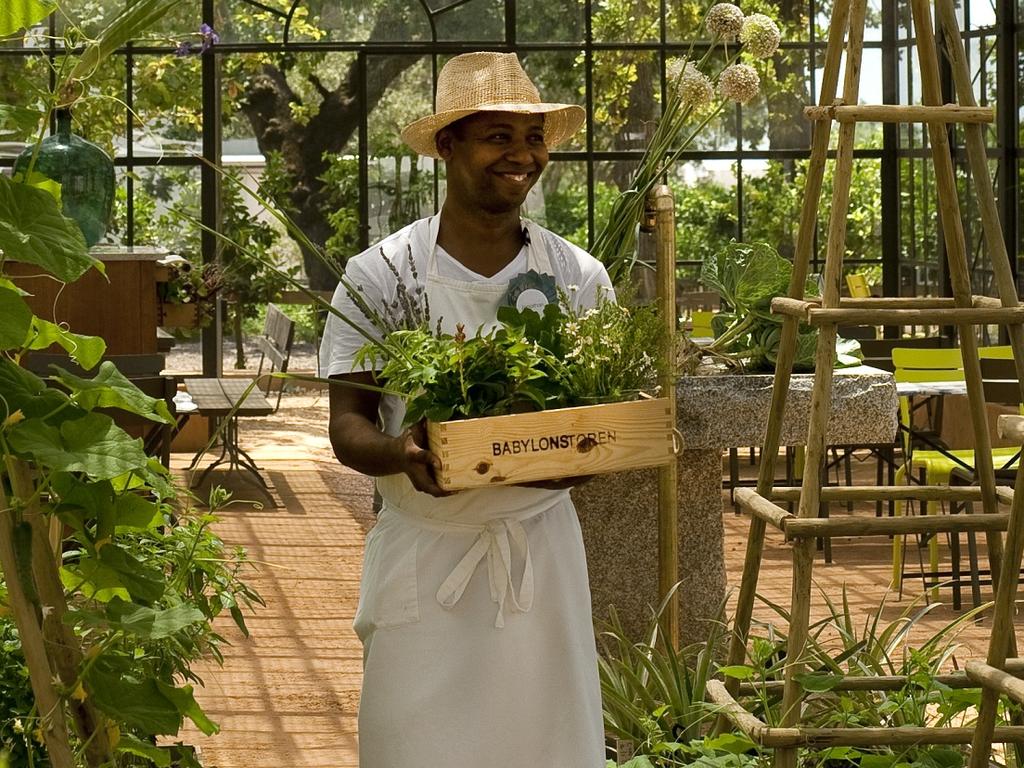Nature’s power to heal and connect
Plush hotels are all well and good, but being in the great outdoors can create the best travel memories.

I was 10 years old the first time I visited Tararua Forest Park, an unglamorous smudge of mud and mountains near where I grew up in Wellington, New Zealand. It’s not a place spruiked by tourism agencies. The mountains aren’t very high, nor are they particularly beautiful. Mountaineer and author John Pascoe wrote they were to Wellington hikers what oatmeal is to Scots: “Dull, solid fare that gives them staple virtues” (and that was one of his more generous passages). But those rain-lashed hills acted as a conduit for reconnection in my family; a place we always returned to, drawn to whatever intangible staple virtues they instilled, porridge-like or otherwise.
That first hike was formative in every conceivable way. I wrote my first published newspaper story about it, detailing our sleepless night in a rat-infested hut. There was something about being in the bush with family, and sharing a modest adventure, that had me hooked. The lodgings might have improved a bit over the years, but the affinity I felt with nature has never left.
That affinity is part of the human condition. I have a friend in Hobart for whom regular immersion in nature is as vital as breathing. She tells me a burden is lifted when she steps into the bush. Her whole body shifts. Pain is banished. Her brain goes silent and her muscles soften. She starts to see better. “It’s like a switch is flicked,” she says. “You can almost hear it.” Recently, walking in the winter sun near Cape Raoul on the Tasman Peninsula, she burst into tears. “It was the relief I’d been craving for weeks.”

It’s no surprise so many of us are drawn outdoors for solace; we live in a land where connection to country goes back 60,000 years. No one who walks the Larapinta Trail, near Alice Springs, can fail to be awed by the power of that vast and ancient landscape, home of the Arrernte people, whose dreamings are etched in stone, and carried by the wind through the red sand gorges.
In 2018 I canoed down a remote section of the Snowy River with Indigenous river guide Richard Swain, who runs Alpine River Adventures in Kosciuszko National Park. Swain calls it the river of life. The stories of that waterway and its ancient song lines were passed on to him by his elders. It’s a country that sings to him. He takes others there so that it may sing to them, too. Paddlers take home an understanding of what connection to country actually means. I know I did. In a year when reconciliation and recognition are fighting to be heard, it’s the voice of country that speaks the loudest.
Nature sometimes gives you no choice but to listen. Novelist and philosopher Iris Murdoch once found herself staring out her window “ … in an anxious and resentful state of mind, oblivious of my surroundings”. She suddenly noticed a hovering kestrel. “In a moment everything is altered. The brooding self with its hurt vanity has disappeared. There is nothing now but the kestrel.”

William Wordsworth’s romantic ruminations on the restorative properties of nature became a life’s work. He understood nature as a living thing we can converse with. You can visit the poet’s home in England’s Lake District, sit in his garden and continue that conversation. Naturalist and environmental philosopher John Muir was on the same wavelength, promising that “nature’s peace will flow into you as sunshine flows into the trees … cares will drop off like autumn leaves”.
Sidestepping sentimentality, there’s no shortage of academic studies to back up the restorative properties of nature-based travel. Its medicinal precedent stretches back to Greek physician Hippocrates, who was extolling the benefits of going bush 2500 years ago. It knows no cultural boundaries. The Japanese practice of “shinrin-you”, or forest bathing, is currently in vogue among Western hiking companies seeking to neatly package a transcendental moment in nature, but these moments are best when unscripted.
I recently walked the Kumano Kodo Trail, a 1000-year-old pilgrimage route through Japan’s Kii Peninsula. The early pilgrims here sought not mere renewal, but ritual rebirth. Spiritual purification was attained by worshipping at shrines to nature deities. Rocks, rivers, trees and waterfalls embodied Shinto gods, known as kami. I was probably the least spiritual person on the trail, but there was something about the practice of nature worship – maybe it was the temporary liberation from the hubris of humanity – that I respected. The cultural landscape renewed me, and my stresses dissipated with the morning mist.

Some of Australia’s best nature experiences showcase the renewal of nature itself. On South Australia’s Murray River Walk, near Renmark, you weave through wetlands replenished by the seasonal release of water upstream. The inundation triggers breeding in fish and frogs, birds flock to floodplains, the river red gums are resplendent in new growth. You go away with an understanding of the life cycle of a river, energised with a sense of stewardship for something bigger than ourselves. Lessons in perspective.
Watching a landscape heal after bushfire is another intensely Australian experience. I’ll never forget visiting East Gippsland after the 2020 bushfires and seeing the green shoots sprouting from blackened banksias, and the stubbly, epicormic growth spreading up the towering trunks of seemingly dead gum trees. Seeing for yourself how a landscape copes (or sometimes doesn’t) with catastrophe is both humbling and inspiring. Lessons in resilience.
But for me, the most vivid example of how nature can heal could only be found in one place: Tararua Forest Park. There was an unexpected member in our hiking party last January: my uncle Andrew, who took me on that formative trip when I was 10. A mountain goat in his youth, early-onset arthritis had crippled him, resulting in a double hip replacement in his early fifties. No one expected he would hike again, but he was determined to return to Mt Hector, a peak he first climbed more than 30 years ago, to show himself he could still do it.
Now I was leading him, giving words of encouragement as he hauled himself up those last few steps to the summit, gripping his oversized staff as though he were Gandalf, holding back the passage of time, turning back the years. If that’s not renewal, then I don’t know what is.





To join the conversation, please log in. Don't have an account? Register
Join the conversation, you are commenting as Logout